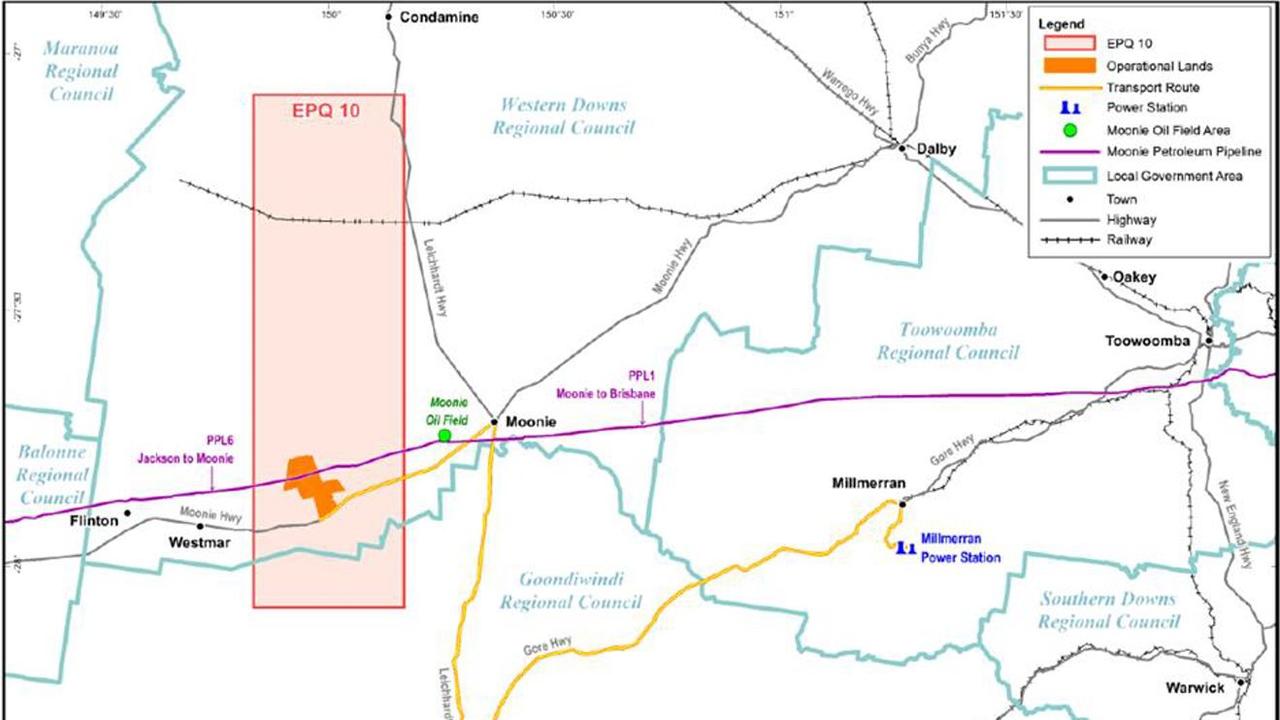AgForce takes federal minister for environment to court over Glencore carbon capture program
The peak representative organisation for Queensland’s rural producers has started court action against the federal environment minister over approval for a trial of carbon capture in the Great Artesian Basin.
The peak representative body for Queensland’s rural producers is taking the federal environment minister to court, in a landmark move to overturn approval for a trial of carbon capture sequestration in the Great Artesian Basin.
On February 9 2022 a delegate for the Environment Minister made a decision that would allow Carbon Transport Storage Corporation (CTSCo), a subsidiary of Swiss mining company Glencore, to capture CO2 from the Millmerran Power Station, transport it to a site near Moonie, and pump that CO2 into the Sandstone Precipice aquifer of the Great Artesian Basin.
The reasons for the decision were provided on February 20, 2024.
Agforce, acting on behalf of Queensland’s rural producers, submitted an application to the Federal Court of Australia to overturn the minister’s decision on March 15, 2023.
The matter has now been listed for a case management hearing on April 10, 2024.

According to their application, Agforce said the decision by the Environment Minister on February 9, 2022 was erroneous and they are seeking to have the decision “quashed or set aside”.
As Agforce details in their claim, the error, as they see it, is that the Environment Minister’s decision did not treat the project as if it is part of a mining development.
Agforce chief executive Michael Guerrin said the organisation has commenced legal proceedings as a last resort.
“We’ve liaised with federal government ministers but got nowhere. We’re mystified by the lack of engagement by politicians of all political persuasions, and the media silence to date is baffling,” Mr Guerin said.
“Court is the last place we want to be but there’s too much at stake not to put our members’ money into this federal court case, despite the risks and costs associated with it.
“Communities are angry, frustrated and deeply concerned. That’s why we have taken such strong action to underwrite and lead legal proceedings.”
However, as cited in the Environment Minister’s reasons for their decision, no public comments were heard during the public consultation period.

University of Queensland’s Centre for Natural Gas director Professor David Close, is an experienced geoscientist with more than 16 years of experience in commercial, operational and academic settings.
Professor Close has no part in the project at hand, but realises the scientific, commercial and social context which are woven into the fabric of a project like this.
As net zero targets loom large, Professor Close said he believed more proposals for onshore carbon capture sequestration would become more common, as pressure mounted on industries which necessarily produce carbon emissions.
In circumstances where a net zero target is imposed across the board in Australia, Professor Close said companies will either move their carbon emitting processes offshore, or have to find a way to balance the emissions.
Professor Close said cement manufacturing was an example of one such carbon-emitting process.
“If we don’t do something to capture the CO2, we either have to offshore that engineering process and make someone else create that cement that you need and then import it - which probably has a higher overall CO2 footprint, or you have to find a way to mitigate the CO2 emissions at that source,” Professor Close said.
“These kinds of projects … may be very important in Australia or Queensland for reaching net zero.”

From a scientific standpoint, Professor Close said the risk of pumping CO2 into the Sandstone Precipice aquifer is potentially changing the acidity of the water in the aquifer or that the CO2 would interact with other compounds in the aquifer.
Professor Close said in order to gain the approval CTSCo received from the environment minister, they would have had to demonstrate the risk was negligible.
“That would be the concern that CTSCo would have had to have demonstrated, through sound science and engineering, that even when they inject CO2, and it mixes with water in precipice, that it won’t create a hazard that’s likely to cause environmental harm,” Professor Close said.
However, while Professor Close said he believed the science of the project was sound, he empathised with landholders in the regions who he said were bearing the brunt of the transition to renewables.
“I’m very empathetic to the position of the landholders who are like ‘well we’re doing all the heavy lifting at the moment, the CO2 impact of this is going to be pretty minimal, it’s just not worth the risk’,” Professor Close said.
He said while the transition to renewables and net zero demands are primarily made by people in the cities, it is generally the people in the regions who feel the consequences most directly.
“You don’t see all the change in Manly or Kooyong when renewables expand by 600 per cent, whereas if you live in Dalby, you’ll start to see change in your environment,” Professor Close said.
“Is that reasonable? I don’t know.”
More Coverage
Originally published as AgForce takes federal minister for environment to court over Glencore carbon capture program








